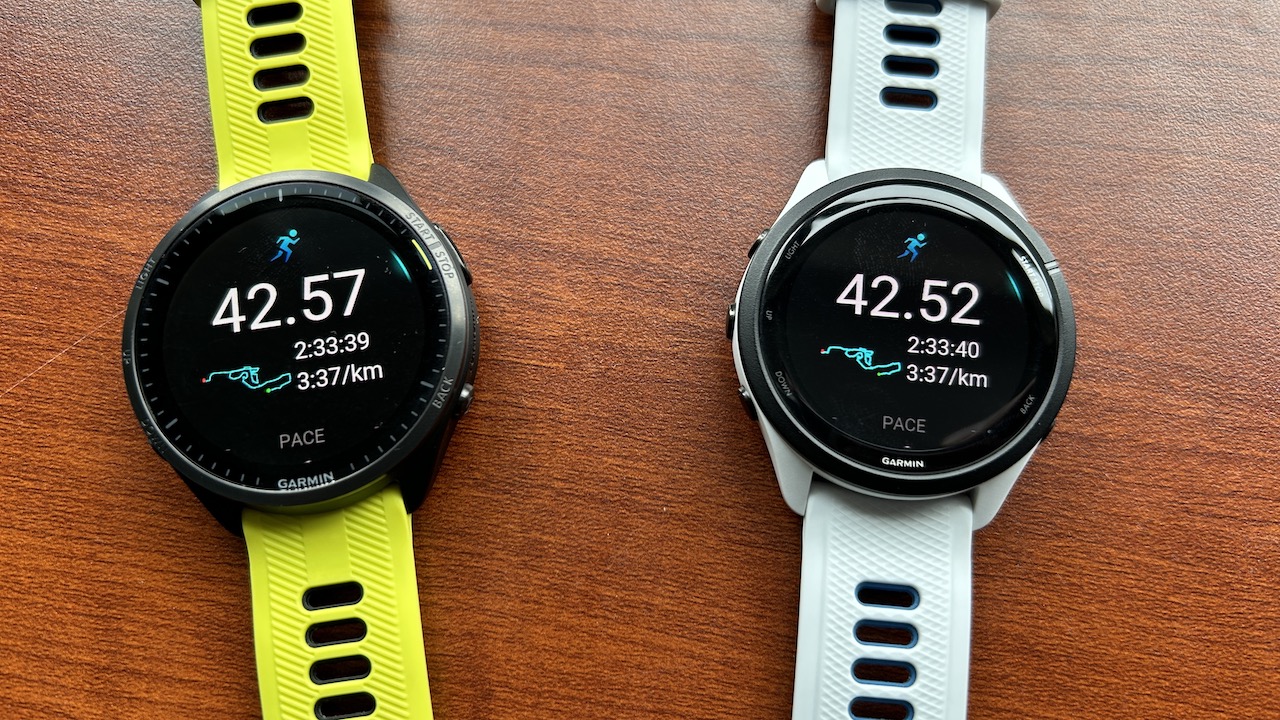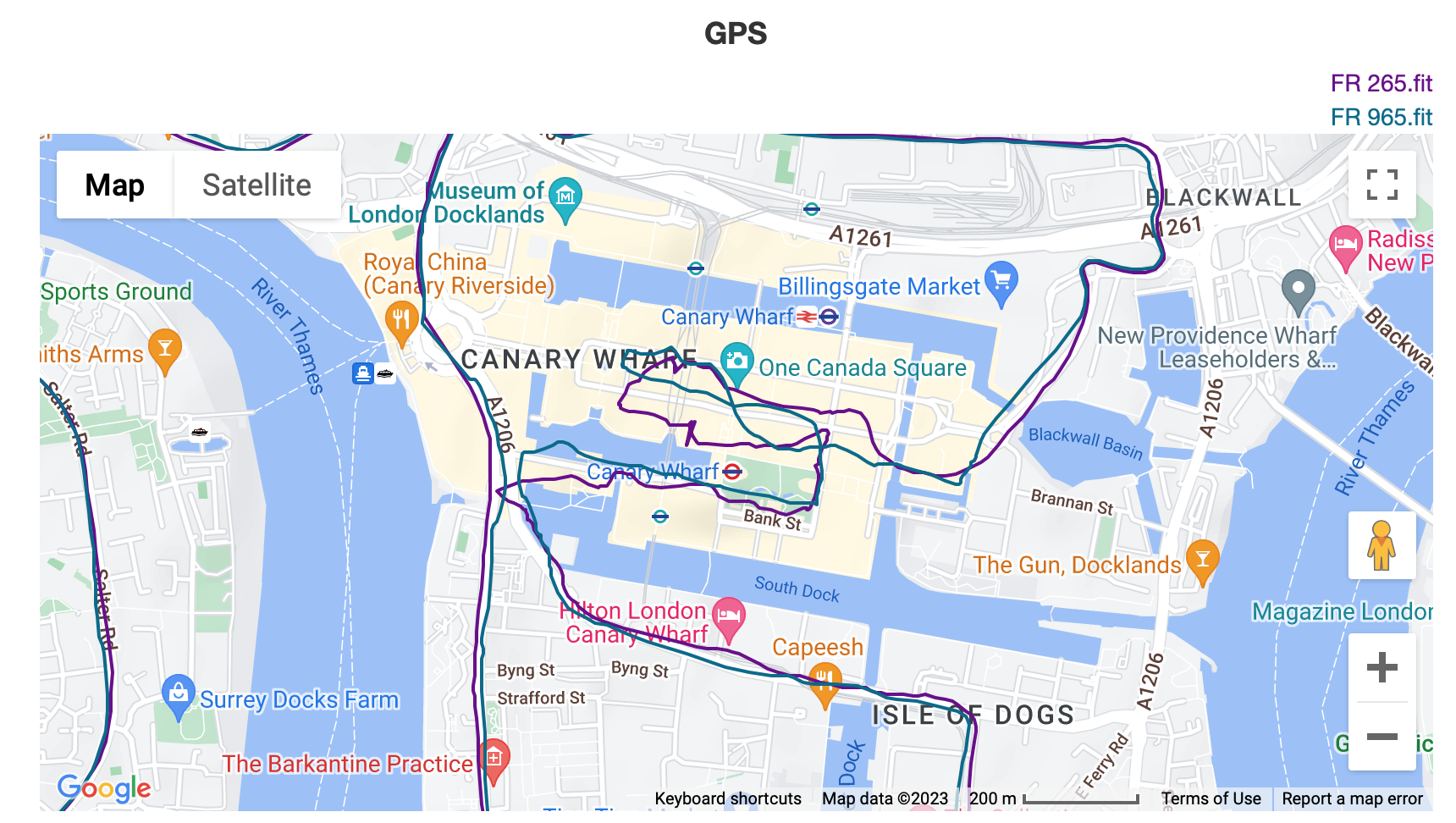
Even the best running watches tend to struggle at the London Marathon, because some sections of the route are a nightmare for GPS accuracy. Notably the skyscrapers of Canary Wharf send watches into a tailspin, and then a couple of long tunnels make locking on to satellites impossible.
I’ve always found it a great event for testing running watches as a result, and since I was running the London Marathon 2023 shortly after the launch of the Garmin Forerunner 265 and Forerunner 965 watches, it seemed a great chance to put them head to head.
Both watches offer Garmin’s highly accurate multi-band GPS tracking, and this is what I was mainly looking to test at the race. Both also sport bright AMOLED displays so I also wanted to see how much faster the smaller Forerunner 265’s battery drained.
I ran 2hr 33min 37sec on the day using the watches to pace the first half at around 6min/mile for a 1hr 18min split before kicking on and running 1hr 15min for the second half. I was taking manual laps on both watches every 5km at the timing mats on the course, though I managed to botch one of these by taking the lap at the K marker, which was a few meters after the mat.
Overall, I was impressed with the GPS accuracy of both watches. I was particularly impressed that the Forerunner 265 got closer to the actual race distance, although it did show a couple more mistakes on the GPS track. Both watches largely produced excellent GPS tracks though, showing me on the right side of the road with very few cut corners or incorrect detours through buildings.
I ran using kilometers and the 265 logged 42.52km (26.42 miles) and the 965 42.57km (26.45 miles). Given the fact I wasn’t always on the perfect racing line, these are likely to be quite close to the overall distance I ran.
Both watches were useful for pacing my 5K splits for the most part, with the exception of the split involving Canary Wharf, where both completely lost it. The GPS track around the tall buildings is a mess and the watches logged ridiculously fast paces at points in this area. Even the best multi-band watches struggle in these conditions, so using manual laps or an app to correct distance on your watch is the way to go.

I had both watches connected to a chest strap heart rate monitor during the race, so can’t comment on their heart rate accuracy, but there was a notable difference in the battery life drop-off.
Both watches were fully charged before I went to bed on Saturday night, and at the end of the marathon the Forerunner 965 had dropped to 83% and the Forerunner 265 to 75%. It’s no surprise that the smaller watch drained faster, and in my testing so far, overall the difference in battery life has amounted to around two to three days on a charge. Both will comfortably survive a marathon, though I didn’t use them to play music during the London Marathon, which does increase battery drain a lot.
My main takeaway from using both at the London Marathon is that there’s no drop in performance in using the Forerunner 265 versus the more expensive Forerunner 965. The GPS accuracy was just as good and the battery more than enough for a marathon. Canary Wharf remains the bane of any GPS watch’s life during the London Marathon, but otherwise the GPS accuracy was certainly good enough to pace the race.







